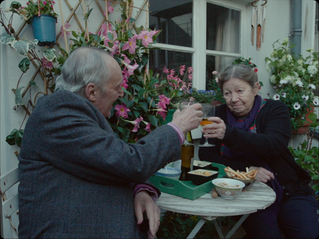Repulsion
- Emma Olsson
- Oct 13, 2021
- 3 min read
Roman Polanski, 1965

Many everyday horrors can be attributed to life in London. Air quality is poor. People push and shove their way through the miserable circus of public transport. Rain causes leaks and floods in Victorian flats. Strangers appear at every corner, the threat of violence thick in the air. This is just to name a few grievances.
Carol, a young Belgian manicurist living with her older sister, tries her best to stave off the city’s persistent intrusions. At home, she is safe. Curtains can be drawn, doors locked and later barricaded. Time passes with the ticking of a clock and the only outdoor noise that filters in is the ringing of church bells from a neighbouring convent; city sounds are not able to pierce the apartment’s protective walls.
Repulsion shows us the pains of living in a big city through the eyes of one of its unwilling martyrs. Carol is not prepared for the mayhem, for the daily street harassment and lecherous landlords. She did not ask for it. She carefully creates her nest: a dark, cramped womb of a South Kensington flat. Outside threatens, but inside promises peace. When her sister’s adulterous lover starts making regular appearances, the equilibrium she has worked so hard to achieve begins to wobble. The man’s razor appears in the bathroom. His foreign toothbrush becomes a weapon, threatening Carol with its otherness. Her sister decides to go away with the man on holiday and Carol intuits that she has already reached her own personal breaking point. When she begs her sister to stay, she is pleading for one last chance at stability, for the womb to remain intact.
Carol responds to her sister’s departure by staying home for three days. When she eventually returns to work, her colleagues show concern. One recommends she go see a film to cheer her up, and in her sisterly presence, Carol even manages to laugh. Then the mention of a boyfriend pulls her back into a catatonic state.
Men. Their laughs, their comments. Hands reaching for something that isn’t theirs. Ever present in Carol’s nightmares is the reaching and grabbing, hands groping through the walls of her apartment like enemies advancing towards a fortress. A man has been pursuing Carol. The woman from across the hall catches them in a tense interaction and she lingers by the door. She senses the distress and is torn between intervening and walking away, minding her own business. In the end, indecisiveness wins her over and she is stuck as a petulant eavesdropper.

This, the film posits, is another one of London’s horrors: its inhabitants’ perpetual bystanderism. Later, when Carol’s sister arrives back from her trip to find the aftermath of her psychological demise, tenants waltz in and out of the flat without warning or welcome. They don’t want to help, only observe the spectacle.
Repulsion is the first of Roman Polanski’s Apartment Trilogy, a series of films that interrogate horror in confined places. The second film in the trilogy, Rosemary’s Baby, also deals with the anxieties of city living, where nosy neighbours and apartment rubberneckers are given sinister motives.
In Rosemary’s Baby, neighbours play a pivotal role in the breakdown of its protagonist, but in Repulsion they are just another facet to the quotidian horror. They are one with the leaks, the cracks in the walls, the licentious men and unwelcome visitors. They are part of what makes the city so inhospitable to someone as committed to her own preservation as Carol. The film ends by illuminating a darkened family photograph. In it, a young Carol gazes into the distance, her haunting glance suggesting that something—somewhere outside the safety of the frame—is looming. Something is about to make its way in.









Comments